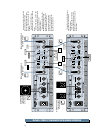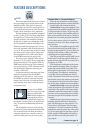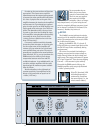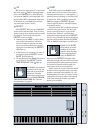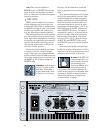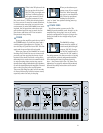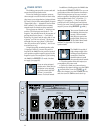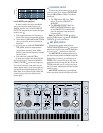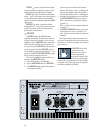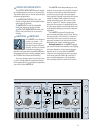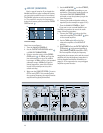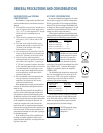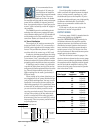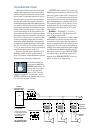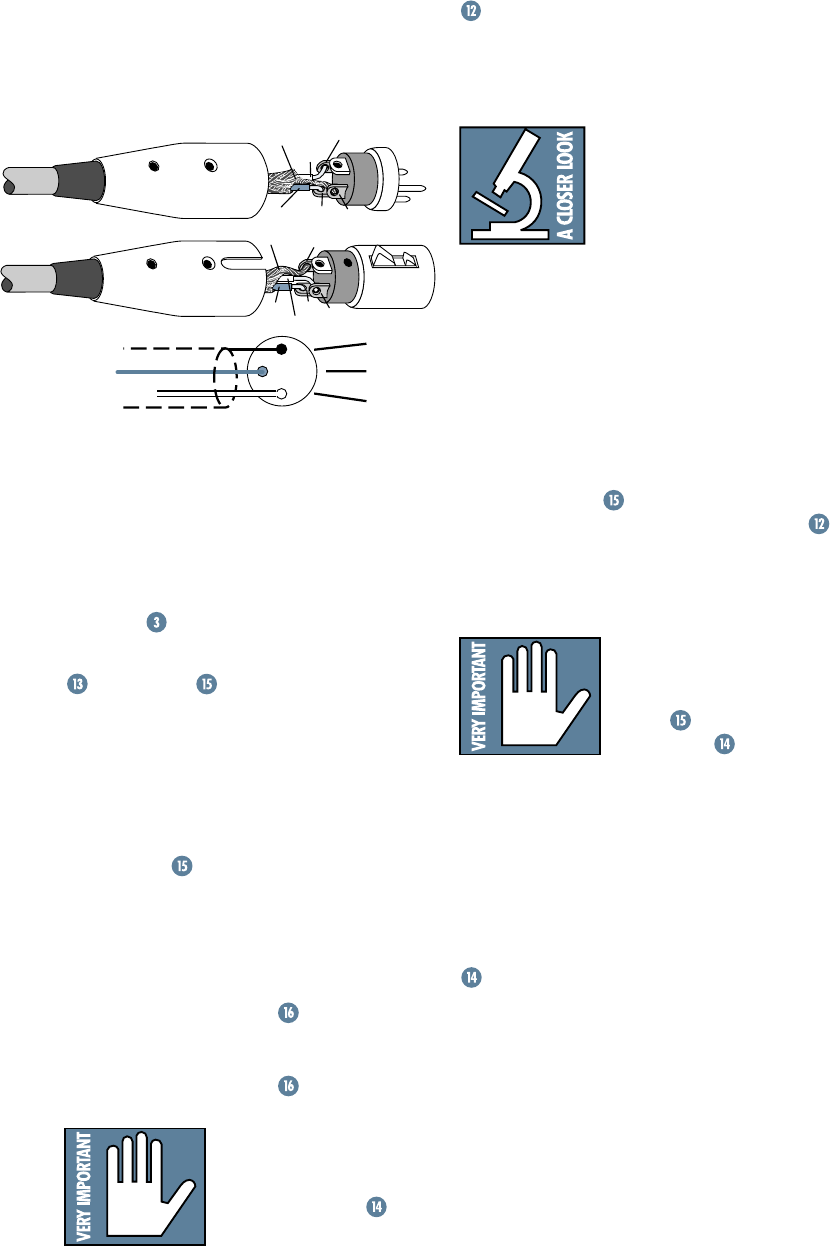
24
You can connect an unbalanced XLR cable
to the M•2600, although this would be unusual
— as unusual as an unbalanced XLR output.
However, if you have an unbalanced XLR
connection to make, refer to the “Connectors”
section (Appendix B) at the back of this
manual for more information.
The M•2600 amp expects to see a nominal
signal level anywhere between the –10 dBV
“semipro” and +4 dBu “pro” standards, mean-
ing almost any line-level mixer or other device
can be plugged into the amp’s
INPUT
s. Use
the
GAIN
controls to adjust the gain of the
amplifier to match the signal level you’re using.
THRU and THRU SWITCH
Someday you’ll do a show at NudeStock and
realize that one M•2600 amplifier is just not
going to do the job — you’ll need a six-foot-
high rack full of ’em to hide behind. That’s
what the
THRU
jack is for. It has three modes
of operation, depending on the setting of the
THRU
switch :
•
THRU
, a straight copy of what’s going into
the amplifier, nothing added or taken
away from your big finish on spoons.
•
LOW OUT
, the lower frequencies only,
below the frequency set by the
CROSSOVER
switch .
•
HIGH OUT
, the higher frequencies only,
above the frequency set by the
CROSSOVER
switch .
Note that the
LOW OUT
and
HIGH OUT
are also af-
fected by the setting of the
LOW CUT FILTER
.
To use the
THRU
outputs, connect your
source equipment into the first amp’s
INPUTs
as usual, then patch from that amp’s
THRU
jacks to the next amp’s
INPUTs
, and so on,
daisy-chaining as many amps as you want for
your application.
A general rule of thumb is to
maintain a load impedance
10 times or more than the
source impedance to prevent
excessive loading. If your
console has an output im-
pedance of 100 ohms, then you can daisy-chain
up to twenty M•2600 amplifiers, which presents
a load of 1200 ohms to the console (input
impedance of 24 kohms divided by 20 amplifiers
= 1200 ohms).
The
THRU
jacks can also be used to relay
the signal on to other devices such as a DAT or
cassette recorder, enabling you to record exactly
what the audience is hearing. In the
THRU
position of switch , the
THRU
jacks are
wired straight from the XLR and TRS
INPUTs
— so the signal coming out of the
THRU
jacks
is exactly the same as the signal going into the
amplifier.
You can also use the 1/4"
TRS
INPUT
jacks as
THRU
jacks, (not affected by
switch
or by the
LOW
CUT FILTER
). Connect
the 1/4" TRS
INPUT
jacks
on the first amplifier to the TRS 1/4"
INPUT
jacks on the second amplifier using 3-conductor
shielded cables with TRS plugs on both ends.
Warning: If you use a regular guitar cord with
2-conductor TS plugs, you’ll unbalance the sig-
nal at the XLR input by grounding the low side
(–) of the signal (pin 3).
LOW CUT FILTER
Every woofer has frequency response specifi-
cations. It’s usually expressed in Hertz (or cycles
per second), like “40Hz–300Hz.” The “40Hz”
refers to the low-frequency point (usually, but
not always) where the speaker’s output drops
by 3 dB, and will “roll off” completely as the fre-
quency goes down. There is no point in sending
a woofer any frequencies it can’t reproduce —
you can’t hear it, and worse yet, it’s a waste
of amplifier power that can be better used
reproducing frequencies you can hear.
2
2
3
1
1
SHIELD
COLD
HOT
SHIELD
COLD
HOT
3
SHIELD
COLD
HOT
3
2
1
Balanced XLR Connectors: Apollo/Soyuz Rendezvous



